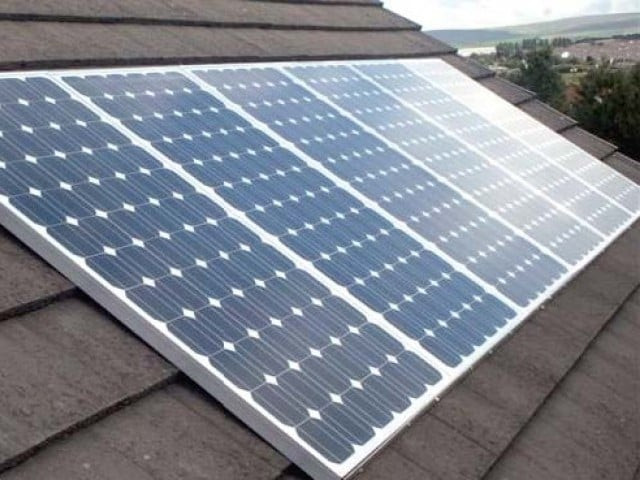Solar net metering to add over 2,600 MW
Number of such consumers will also grow in line with SDG target

Pakistan is likely to add 2,633 megawatts of energy to the system through solar net metering in the upcoming fiscal year 2025-26.
Despite having surplus installed power generation capacity, the country is expected to add a total of 2,800 MW to the national grid, including a major contribution of 2,633 MW from solar net metering.
According to the Annual Plan 2025-26, these additions will raise the installed generation capacity to 44,626 MW by the end of June 2026.
The number of net metering consumers is also expected to grow by 197,655, contributing to the Sustainable Development Goal (SDG) indicator through increasing the share of renewable energy in total energy consumption and supporting grid stability.
At that point, the generation mix is projected to comprise approximately 50.5% from renewable sources (including hydel, solar, solar net metering, wind and bagasse) and 49.5% from thermal sources (such as coal, gas, re-gasified liquefied natural gas, oil and nuclear).
The power sector will receive a public investment of Rs161,635 million from the Public Sector Development Programme (PSDP) of FY26, including government-budgeted/self-finance projects of power companies, excluding independent power producers (IPPs).
The government plans to execute 63 projects.
These investments will contribute directly to the achievement of SDGs through distribution and transmission projects aimed at increasing access to electricity and through power generation projects by enhancing the share of renewable energy.
By the end of June 2026, the transmission sector will be boosted by an additional capacity of 5,550, 4,710 and 1,300 MVA on 500-kilovolt, 220kV and high-voltage, direct-current (HVDC) grids, respectively.
These transmission lines will be extended by 170 km (500kV), 355 km (220kV) and 137 km (±660kV). Additionally, one new grid station will be established at the 765kV level and two at the 220kV level.
To increase the proportion of population having access to electricity, the targeted investment in power distribution will lead to the electrification of 15,352 villages and the addition of 1.861 million new consumer connections during FY26.
These efforts will directly expand electricity access across urban and rural areas.
In support of the objectives, the distribution network will be strengthened through the extension of 1,244 km of 132kV transmission lines while the capacity of 132kV grids will be enhanced by 2,490.7 MVA.
The government has launched several strategic initiatives under the Uraan Pakistan to enhance energy security, sustainability and efficiency.
These are closely aligned with the achievement of SDG targets, Pakistan's climate commitments, Nationally Determined Contributions (NDCs) and strategies for resilience and adaptation.
These key policies, reforms and programmes include the National Electricity Plan (2023-27), which focuses on six key objectives – diversification, resilience, self-sufficiency, affordability, financial viability and sustainability – supported by 20 priority areas with clear targets to ensure clean, reliable and affordable energy.
Similarly, green energy projects are in line with Uraan and the Alternative and Renewable Energy (ARE) Policy 2019, which has set the target of increasing the share of renewables to 30% by 2030.
The new initiatives comprise the deployment of battery energy storage systems and 400 MVAR reactive power compensation devices (including FACTS) within the National Transmission and Despatch Company (NTDC) network to improve grid flexibility and resilience.
This aligns with Uraan's priority of building resilient infrastructure as well as the National Electricity Plan, which puts emphasis on modernising infrastructure.


























COMMENTS
Comments are moderated and generally will be posted if they are on-topic and not abusive.
For more information, please see our Comments FAQ